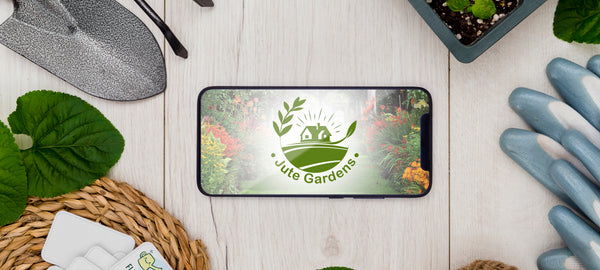
Planting for the Planet: How Your Garden Choices Impact the Environment
Gardening is more than a hobby or a means to beautify our surroundings; it's an intimate connection with nature. In recent years, the notion of 'Planting for the Planet' has gained momentum, emphasizing the importance of making environmentally conscious choices in our gardens. Our decisions, from the plants we choose to the methods we employ, have far-reaching implications on the ecosystem. Here's a closer look at how gardening choices can impact the environment, and what we can do to make a difference.
The Environmental Footprint of a Garden
Gardening, at its core, can be a sustainable practice, but modern gardening methods often overlook the ecological balance. Chemical fertilizers, excessive water usage, non-native plants, and plastic tools contribute to a garden's environmental footprint. Understanding these factors can help gardeners make more responsible choices.
-
Water Consumption
Water is a precious resource, and gardens often consume a significant amount. From sprinklers to hoses, water waste in gardens is a common problem. Employing water-saving techniques like drip irrigation or collecting rainwater can mitigate this issue.
A comprehensive guide on water-efficient gardening provided by the United States Environmental Protection Agency (EPA): Water-Saving Tips for Your Lawn and Garden.
-
Chemical Usage
Synthetic fertilizers and pesticides may yield short-term benefits but can have long-term environmental consequences. They can contaminate soil, water bodies, and harm beneficial insects. Opting for organic alternatives helps preserve the ecosystem's integrity.
-
Plant Selection
Choosing native plants over exotic or non-native ones supports local wildlife and requires less maintenance. Native plants are adapted to local climate conditions, reducing the need for additional water and care.
-
Gardening Tools and Materials
Plastic pots, tools, and garden decorations contribute to plastic pollution. Considering eco-friendly alternatives like jute or bamboo, and using compostable materials, helps reduce waste.
Planting with Purpose: Sustainable Gardening Practices
Creating an eco-friendly garden doesn't mean sacrificing beauty or functionality. Here's how you can create a garden that's in harmony with nature.
-
Choose Native Plants
Native plants support local pollinators, birds, and other wildlife. They are naturally adapted to the soil and climate, requiring less maintenance and resources.
Native Plant Selection Guide: The National Wildlife Federation offers a native plant finder tool that helps gardeners choose plants suitable for their region: Native Plant Finder. This link can be useful for readers interested in incorporating native plants to support local ecosystems.
-
Embrace Organic Gardening
Organic gardening practices shun synthetic chemicals in favor of natural compost, mulch, and pest control methods. This approach nurtures soil health and promotes a balanced ecosystem.
-
Implement Water-Saving Techniques
Utilize rain barrels, drip irrigation, and mulching to conserve water. These methods not only save water but also contribute to healthier plant growth.
-
Use Sustainable Materials
Opt for tools and pots made from sustainable materials like wood, metal, or jute. These choices minimize your garden's plastic footprint.
-
Create Wildlife Habitats
Consider adding bird feeders, bee hotels, or water features to support local wildlife. Encouraging biodiversity adds life and vibrancy to your garden and supports the broader ecosystem.
Real-Life Inspiration: Eco-Friendly Gardens
Several public and private gardens have embraced the 'Planting for the Planet' philosophy. From community gardens practicing permaculture to individuals creating pollinator-friendly spaces, these gardens serve as inspirations for environmentally conscious gardening.
The Ripple Effect: How Gardens Impact the Global Ecosystem
Gardens are microcosms of the global ecosystem. Each choice, whether it's planting a tree or avoiding plastic pots, has ripple effects. A tree not only provides oxygen but also sequesters carbon, helps with soil erosion, and provides habitat. A plastic-free garden reduces waste and contributes to a cleaner planet.
Learn more about eco-friendly gardening with jute here: Jute Fiber Grow Pots: The Sustainable Solution for Indoor Seed Startin (jutegardens.com)
Conclusion
'Planting for the Planet' is more than a catchy phrase; it's a call to action. It urges us to recognize the profound impact our gardens have on the world around us and encourages us to make choices that align with environmental stewardship.
Gardening is a powerful way to reconnect with nature and play a part in healing our planet. By making informed and responsible decisions, we can create gardens that not only nourish our souls but also nurture the earth.
Our gardens can be a testament to our commitment to the planet, a space where beauty and sustainability coexist. It starts with a seed, a conscious choice, and grows into a movement that can change the way we relate to the earth.
Join the 'Planting for the Planet' movement. Make your garden a sanctuary for life, a space that resonates with the heartbeat of nature, and a steppingstone towards a greener, healthier world.
Frequently Asked Questions (FAQ)
Q1: What are native plants, and why are they important?
A1: Native plants are species that have evolved in a specific region over thousands of years. They are adapted to the local climate and soil, supporting native wildlife, requiring less water, and minimizing the need for synthetic chemicals.
Q2: How can I reduce water consumption in my garden?
A2: Implementing water-saving techniques such as drip irrigation, using rain barrels, selecting drought-tolerant plants, and mulching can significantly reduce water consumption in gardens.
Q3: Are organic fertilizers better than synthetic ones? Why?
A3: Organic fertilizers are generally considered better for the environment because they are derived from natural sources and break down slowly, nourishing the soil. Synthetic fertilizers can lead to soil and water contamination due to their chemical composition.
Q4: What are some alternatives to plastic gardening tools and pots?
A4: Sustainable alternatives to plastic gardening tools include those made of metal, wood, bamboo, or jute. Biodegradable pots made from materials like peat, coconut coir, or jute fiber are also great options.
Q5: How can I attract wildlife to my garden?
A5: Creating wildlife-friendly habitats by adding bird feeders, bee hotels, water features, and planting pollinator-friendly plants can attract and support various wildlife species in your garden.
Q6: How does planting a tree contribute to the environment?
A6: Planting a tree helps sequester carbon dioxide, provides oxygen, supports wildlife habitats, prevents soil erosion, and enhances the landscape's aesthetic appeal.
Q7: Can I practice sustainable gardening in small spaces like balconies or patios?
A7: Absolutely! Even in small spaces, you can grow native plants in eco-friendly pots, use organic compost, conserve water with proper watering techniques, and avoid using synthetic chemicals.
Q8: What is permaculture, and how can I apply it in my garden?
A8: Permaculture is a design system that mimics nature's patterns to create sustainable and self-sufficient ecosystems. Applying permaculture principles involves observing the local environment, maximizing diversity, recycling nutrients, and creating synergistic plant relationships.
Q9: Where can I learn more about sustainable gardening practices?
A9: Many local nurseries, gardening clubs, universities, and online resources offer courses, workshops, and information on sustainable gardening practices. Resources like the Organic Materials Review Institute and the National Wildlife Federation are also helpful.
Q10: Can I make a real difference by choosing sustainable gardening practices?
A10: Yes! Your choices in the garden can have a positive impact on the environment, from conserving resources to supporting local ecosystems. By adopting sustainable practices, you contribute to a global movement towards environmental stewardship.

